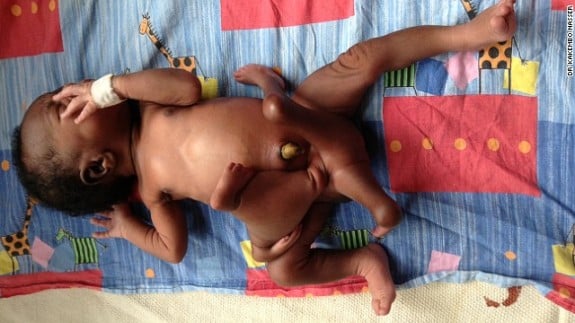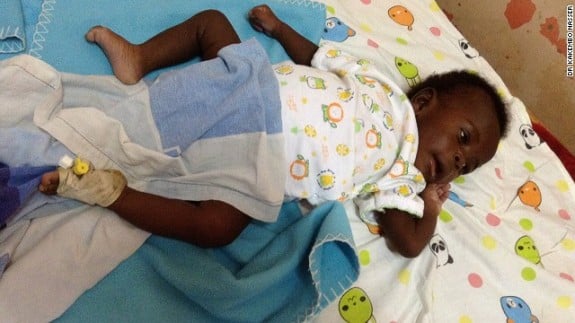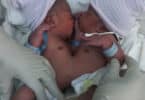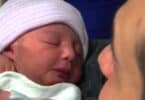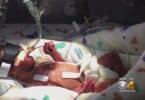With the help of her mother-in-law, Margaret Awino gave birth to a baby boy in her eastern Uganda home. But rather than experience the joy she had with her other four children, the mother experienced the shock of her life when she noticed that her son, Paul Mukisa, had been born with four legs and four arms.
Shocked, scared and alarmed, the family rushed to a nearby district hospital for help. Unable to help them, the district hospital referred the family to Mulago Hospital in the Ugandan capital of Kampala. It was there that doctors determined that the child received a diagnosis of “parasitic twinning,” a variation of conjoint twinning in which one of the twins did not fully develop. He had his own body, as well as a full set of arms and legs from another mirror-image twin that never fully grew.
Ugandan doctors ran a series of tests to determine more about how the parasitic twin had affected little Paul’s growth. In the end, they found that the little boy shared a pelvic bone with his twin. Additional abnormalities – his heart on the right side of the body instead of his left, his liver on the left side of his body instead of his right – were also found during the examination.
Rather than treat him immediately, doctors released Paul home for three months so that he could grow some before separating him from the parasitic twin. It was only just last month that they decided to move forward with the operation.
Over the course of a three-hour surgery, three surgeons, three anesthesiologists, and two nurses were able to successfully remove parts of the parasitic twin from Paul’s body.
“The baby was given general anesthesia and the torso and trunk of the parasitic twin from the host, which had two arms but no head or heart – was detached from the host baby,” Dr. Nasser Kakembo, one of the surgeons who helped with the operation, told CNN. “Then we also detached the lower limbs of the parasitic twin from the host, which included disarticulating the right and left lower limbs as they were attached by joints. We controlled the bleeding and fashioned skin flaps to close the resulting wound. There were no intra-operative or post-operative complications and mild blood loss and a precautionary blood transfusion was given.”
Now, three weeks post-op, little Paul is progressing and breastfeeding well, doctors say. It is also expected that, while Paul is expected to “have a wide gait due to the large pelvic bone [which] may require orthopedic reconstruction in the future,” doctors also expect that he will “a healthy baby.”
But for now, he remains at the hospital, and will continue to be there for at least the next two weeks, receiving ongoing post-operative treatment.
Conjoined twins are relatively rare – occurring in only about one in every 50,000 births – but parasitic cases like Paul’s are extremely rare. It happens when one of the twins stops developing during the pregnancy, and the remnants of that baby then merge with the twin that is still developing. In fact, this was the first time that the Uganda doctors had ever performed such an operation.
“We have not had a prior experience with a parasitic twin, but we work on many children with multiple complex multi-organ congenital anomalies such as intestinal, urologic, cardiac, and orthopedic defects,” Kakembo said. “Although twinning is very rare worldwide, we have an increased incidence in Africa; we [have] seen numerous sets of conjoint twins, five to sex sets in the last few years.”
Related Articles:
- Exposure to Certain Phenols While In Utero May Disrupt Growth during First Year of Life for Boys
- Maine Governor Orders State to Back Mom in Lifting Infant Daughter’s DNR Order
- Conjoined Twin Girls in Texas Set to Undergo Separation Surgery

